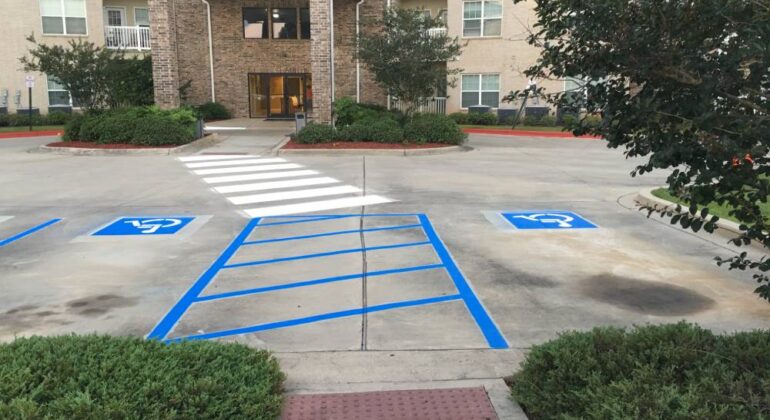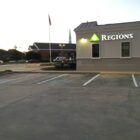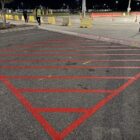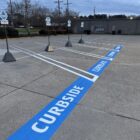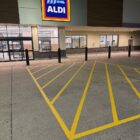Keeping the stripes and markings in your parking lot visible is key to maintaining a safe and orderly property. Unfortunately, standard parking lot striping paint doesn’t last very long. As a result, you have no choice but to invest in restriping services every 18 to 24 months. But what if we told you there was a better, longer-lasting alternative? Thermoplastic striping is quickly becoming the go-to for parking lots everywhere. In this blog, we’ll explore how thermoplastic line striping differs from traditional parking lot paint.
What is Thermoplastic Striping Paint Made of?
Thermoplastic markings are fundamentally different from traditional lot striping in many ways. However, the biggest difference lies in the paint formula. Generally, contractors use low-cost water or solvent-based paints for lot striping. These paint formulas get the job done but tend to fade quickly and need frequent touchups to maintain vibrancy.
Thermoplastic paint is a synthetic material that gets to your property as a dry powder! The powder contains a mix of resins and additives. The additives include pigments and glass beads for reflectivity. Thermo plastic paint is highly versatile, so you can customize the color and finish to meet your unique needs for Baton Rouge thermoplastic striping.
How Does New Orleans Thermoplastic Markings Differ from Traditional Lot Striping?
Not only is thermoplastic paint different from traditional liquid paints, but the application method is also unique. When contractors apply thermoplastic pavement markings, they heat the dry mix in a specialized kettle. The exact temperature varies, but thermoplastic paint typically needs to reach 400 degrees Fahrenheit before it becomes molten.
Once the material becomes molten, teams can apply the thermoplastic markings. The paint starts to cool immediately, forming an ultra-tight bond with your asphalt.
Is Thermoplastic Striping More Durable?
New Orleans thermoplastic striping is significantly more durable than your garden-variety paint. The resins and glass beads offer impressive resilience, and the unique melting process ensures that the pigments are baked into the thermoplastic material. As a result, you don’t have to worry about fast fading and lost vibrancy!
Standard parking lot striping needs a refresh after 18 to 24 months. However, thermoplastic pavement markings can last eight years or more! Baton Rouge thermoplastic striping is an investment that lasts.
How Does Thermoplastic Markings Differ in Cost and Curing Time?
The one potential downside of Baton Rouge thermoplastic striping is its cost. Compared to traditional paint, thermoplastic markings are a significant investment. But when you look at the long-term cost, you’ll see it’s worth the added costs. Because thermoplastic pavement markings last so long, you’ll spend less on upkeep over the long haul!
Another benefit of New Orleans thermoplastic striping is its quick application. Most traditional parking lot striping paint needs an hour or more to cure—however, thermoplastic line striping cures in as little as five minutes. Teams can work fast to complete your entire parking lot, resulting in significantly less downtime and fewer disruptions to your business.
Ready to upgrade to long-lasting thermoplastic pavement markings? Second Line Striping has you covered! We’re a parking lot striping company based in Hammond, LA. We serve clients throughout Baton Rouge, New Orleans, Lafayette, Covington, Metairie and other nearby cities.
We work hard to exceed your expectations, providing top-notch customer service while delivering results you’ll want to show off. You can turn to us for thermoplastic line markings, parking lot striping, restriping, cleaning and more.
Reach out to talk shop, discuss your project in greater detail and get a free quote. You can reach us at (225)331-0062. If you prefer, you can also use our online contact form or email us at mike@secondlinestriping.com.

